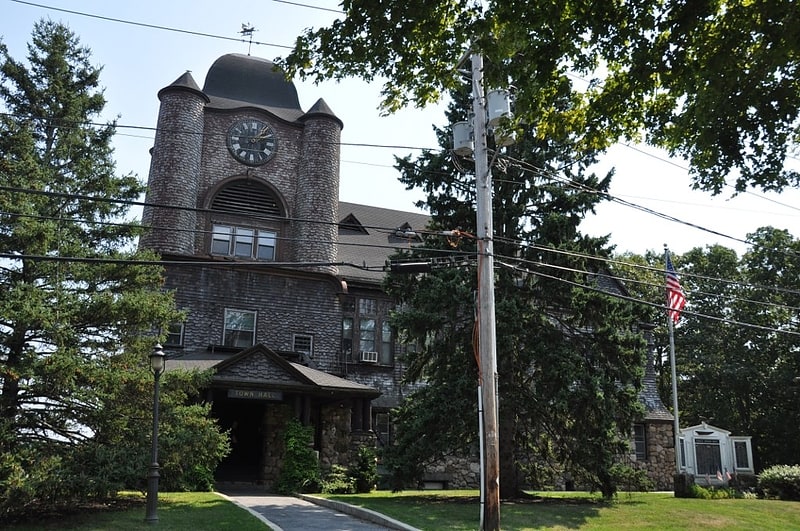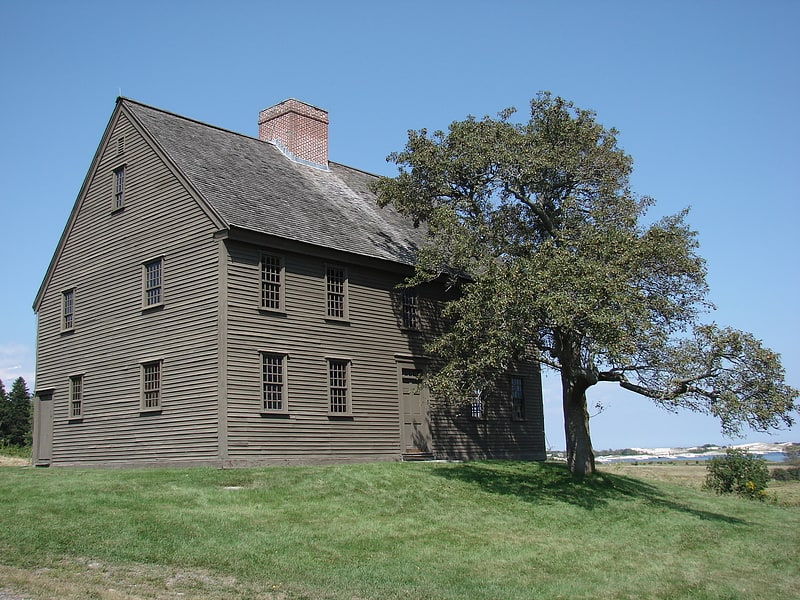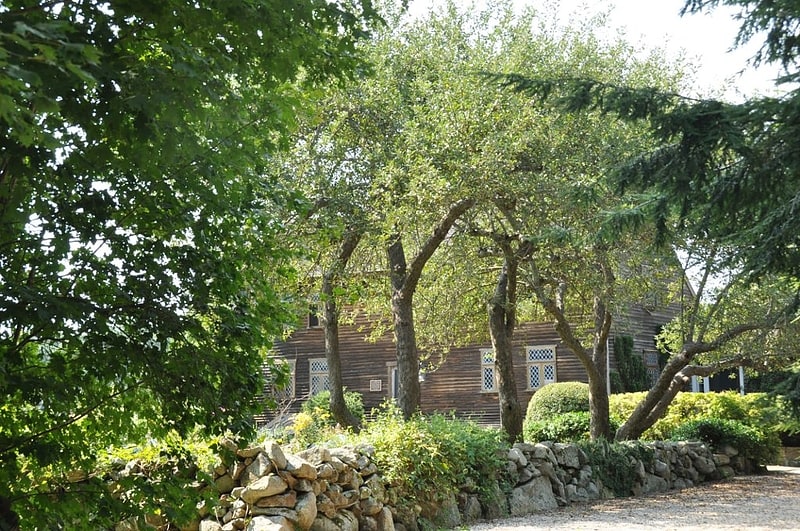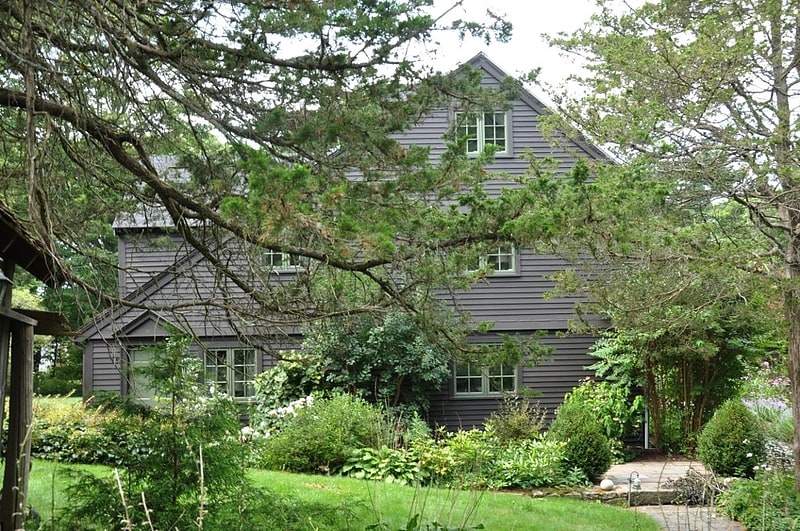Discover 7 hidden attractions, cool sights, and unusual things to do in Essex (United States). Don't miss out on these must-see attractions: Essex Shipbuilding Museum, Cogswell's Grant, and Essex Town Library. Also, be sure to include Choate House in your itinerary.
Below, you can find the list of the most amazing places you should visit in Essex (Massachusetts).
Table of Contents
Essex Shipbuilding Museum

Museum in Essex, Massachusetts. Located in the heart of Essex, Massachusetts, the Essex Historical Society & Shipbuilding Museum is sandwiched between an acre of land set aside in 1668, “for a yard to build vessels and employing workmen for this end” and practicing commercial wooden shipyard, owned and operated by Harold A. Burnham. The museum is integral to the town's historic character, scenic vista and central river basin. Essex-built schooners were famous world-wide as sound and able fishing vessels. Essex has a history that is unique among old American villages. A small village, no larger than it is now, on a small tidewater river, built a prodigious number of wooden boats and ships, some four thousand in number, and in the process, developed a reputation for some of the finest fishing schooners in the world.
Founded as The Essex Historical Society in 1937, the organization remains committed to collecting and preserving the unique history of the Village of Essex. The Shipbuilding Museum was established in 1976 as part of the town's observation of the American Revolutionary Bicentennial. In 1990 EHSSM acquired the Evelina M. Goulart which was built in the shipyard in 1927 and used until the 1980s for sword fishing and later as a fishing dragger. She is one of five historic Essex-built fishing schooners that survive. In 1993, the society purchased a section of riverfront where shipbuilding flourished for over 300 years. This historic site is where the Story family operated its shipyards from 1813 to the end of World War II. The yard is still active and showcases machines, tools, materials and boats. The Chebacco Boat, Lewis H. Story, flagship of the Museum, was built on the site in 1998 and is often seen at the Museum or at nautical events throughout New England.
The Museum maintains one of the most important maritime collections in the region which includes antique tools, photographs, documents, exhibits portraying both the shipbuilding industry and life in the quintessential small American town of Essex.
Currently EHSSM hosts a diverse number of programs. Education programs host students for project-based learning that exposes students to our history, the shipbuilding process, and our community. They have an engaging evening lecture series on topics surrounding the shipbuilding, fishing, and other marine industry. They also host workshops practicing traditional arts and skills. EHSSM has a diverse and dedicated group of shipyard volunteers that come every Saturday year round that keep the facilities and vessels up to date and ready for visitors. They host many large scale community based events and provide a central location for the community to gather around.
The Essex Shipbuilding Museum is a maritime museum in Essex, Massachusetts which contains historical and demonstrative displays regarding the history of the wooden shipbuilding industry in Essex. Essex produced more wooden fishing schooners between 1668 and the twentieth century than anywhere else in America. The museum contains various ship models and half hulls including several on display from the Smithsonian Institution. Displays include antique shipbuilding tools, photos, and dioramas of the former shipyard.
The museum also features the Evelina M. Goulart, an Essex-built schooner built in 1927.
Adjacent to the museum is a boat yard owned by generations of the Story Family, which still constructs and launches classic wooden ships built in the Essex tradition.[1]
Address: 66 Main St, 01929-1343 Essex (Essex)
Cogswell's Grant

Museum in Essex, Massachusetts. Cogswell's Grant is a working farm and historic house museum in Essex, Massachusetts. It was the summer home of Bertram K. and Nina Fletcher Little, preeminent collectors of American decorative arts in the mid 20th century. Through her research and innumerable publications, Mrs. Little charted new areas of American folk art, such as decorative painting, floor coverings, boxes, and New England pottery.
In 1937, the Littles purchased this farm, including its 18th-century farmhouse with views of the Essex River, as a family retreat and place to entertain. They named it Cogswell's Grant, after John Cogswell, who was the first English colonial owner of the property, which includes about 165 acres (67 ha) of land. They carefully restored the farmhouse, trying to preserve original 18th-century finishes and carefully documenting their work, and decorated from their extensive collection of artifacts. In more than 50 years of collecting, they sought works of strong, even quirky character, and in particular favored objects with their original finishes and New England histories. They decorated the house for visual delight rather than historical accuracy. The result is rich in atmosphere and crowded with collections of things—primitive paintings, redware, painted furniture, stacked Shaker boxes, weather vanes and decoys—that have since come to define the country look.
Bertram Little served for many years as president of the Society for the Preservation of New England Antiquities, now called Historic New England. The Littles bequeathed the property, complete with its contents and associated records, to that organization in 1984. Part of the 19th century barn north of the house has been adapted for use as a visitor's center, and the rear ell of the house has been adapted for use as a caretaker's residence and visitor restrooms.
Cogswell's Grant is open for public tours Wednesday through Sunday, June 1 - October 15.[2]
Address: 60 Spring St, 01929-1308 Essex (Essex)
Essex Town Library

Building in Essex, Massachusetts. The Essex Town Hall and TOHP Burnham Library is an exuberant Shingle Style building at 30 Martin Street in Essex, Massachusetts in the United States. Containing town offices, a public library and an auditorium, it was built in 1893-1894, and its architect was Frank W. Weston, of Boston and Malden, Massachusetts.
The new building was described in the March 1894 issue of The Library Journal:
Essex. Public Library, The new town-hall and library building was dedicated on the afternoon of Feb. 15. A large audience was present at the dedication exercises, which included an oration by Rev. D.O Mears, music, several short addresses, and the reading of poems. In the evening there was a concert, followed by dancing.
The building which combines town-hall and library has just been completed after plans by Frank W. Weston, a Malden architect. The lower story is built of field-stone, and the upper part, including the tower, of wood. The interior is finished in antique oak, and the walls are painted in hues of brown and yellow. In the upper story is situated the town-hall proper. It has a seating capacity for 550. There is a stage and a gallery which will allow of entertainments being given there. One-half of the lower floor is devoted to the library, and will accommodate several thousand books. From the entrance there is a hallway that turns abruptly to the right, and on this passage are doors leading to the offices of the selectmen, the treasurer, and other officials. There are three entrances to the building, the main entrance being through an attractive carriageway into a spacious vestibule.
In the tower is the clock, with chime-bells, which strike the hour, presented to the town by L. G. Burnham.
Both the land and the building were gifts of the late T.O.H.P Burnham, of Boston, who was a native of Essex. Mr. Burnham died in 1891, and by his will the town received $30,000, half of which was for the town and the other half for a public library. Previous to this the town had come into possession of $5000 through the will of the late Dr. J. D. Russ, also a native of Essex. It was decided to build the town-hall and the library together.
The building was added to the National Register of Historic Places in 2007.[3]
Address: 24 Martin St, Essex (Essex)
Choate House

Choate House is a historic house on Choate Island in the Crane Wildlife Refuge, Essex, Massachusetts, owned and administered by the nonprofit Trustees of Reservations.
Choate House was built around 1730, was the birthplace of lawyer and public citizen Rufus Choate (1799–1859), and has remained virtually unchanged for over two centuries. It stands on Hog Island, also called Choate Island, and is accessible only by boat.[4]
George Giddings House and Barn

Building in Essex, Massachusetts. The George Giddings House and Barn is a historic First Period farm in Essex, Massachusetts. Both the house and the barn are estimated to have been built in the 1690s, and contain construction details unique in Essex County First Period buildings. The house was originally built as a single two story cell structure with a large chimney on one side, which was then widened with the addition of a second cell on the other side of the chimney. In the 19th century a number of alterations were made: the central chimney was removed, the entry of the house was reoriented from south to north by the addition of a new central door on the north face, and two new chimneys were added along the north elevation. The house has modern additions to the rear side. The barn is of a similar vintage to the house, although it started with only five windows, and was extended at some point by the addition to the east of a sixth bay. It is one of a very few surviving First Period barns.
The property was listed on the National Register of Historic Places in 1990.[5]
David Burnham House

The David Burnham House is a historic First Period house on Pond Street in Essex, Massachusetts. The two story five bay wood frame colonial is said to have been built c. 1684 by David Burnham, son of Thomas Burnham, an early settler of the Essex area. The house remained in the Burnham family for almost 150 years. It was the subject of restoration work in the early 20th century by the Essex Institute under the auspices of George Francis Dow. At this time its kitchen fireplace, said to be the largest known in Essex County was uncovered. Modern facilities were added to the house in the 1960s.
The house was added to the National Register of Historic Places in 1983.[6]
Benaiah Titcomb House

The Benaiah Titcomb House is a historic First Period house in Essex, Massachusetts. The oldest part of the house, built c. 1700 in Newburyport, was a two-story section two rooms wide, with a central chimney. Sometime before the end of the First Period a shed-style leanto addition was added to its rear, giving it a saltbox appearance. The house was moved to its present location in 1917, oriented to provide views of the coast. At this time a new chimney was provided, and a large dormer was added to the rear to expand the upstairs living space.
The builder, Benaiah Titcomb, was the son of William Titcomb, an early settler of the area. The house was added to the National Register of Historic Places in 1990.[7]